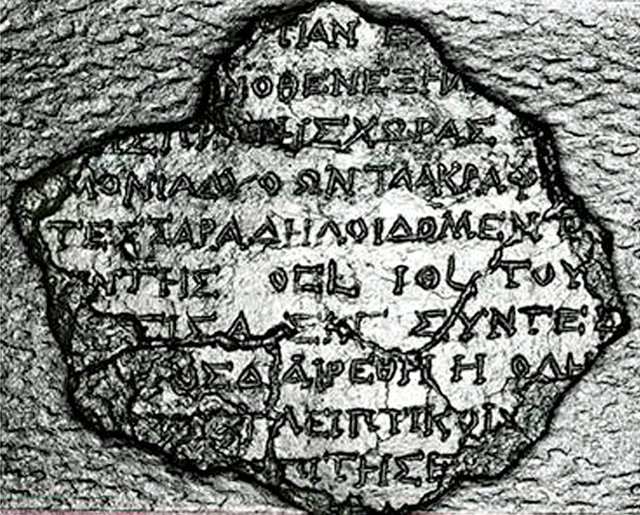MessageToEagle.com – In 1900, an amazing encrusted bronze object of undetermined use was found on the small island of Antikythera, 25 miles northwest of Crete. One of the curious scientists decided to clean it and found that it was a complex instrument with cog-wheels fitting one into another.
Finely graduated circles and inscriptions marked on the instrument in ancient Greek were apparently related to its function. Based on the cargo, it was dated to about the 1st century BC.
It seemed to be a sort of astronomical clock without pendulum but no Greek or Roman writer has ever described such an ancient computer, though many other wonders of antiquity are mentioned.

“Finding a thing like this is like finding a jet plane in the tomb of King Tut” said once Derek J. de Solla Price (1922 – 1983), British physicist, historian of science, and information scientist, credited as the father of scientometrics, who came across the artifact and devoted time to research it.
He established that the artifact was s computing machine that could work out and exhibit the motions of the sun and moon and probably also the planets.
It was different from all other planetary models. It wasn’t like the more familiar planetarium, but rather a mechanization of their purely arithmetical Babylonian methods.
Researchers have long debated where the device was built, and by whom.
Also the strange mechanism’s purpose has been the subject of scholarly debate.

Now a new analysis of the dial used to predict eclipses, which is set on the back of the mechanism, provides yet another clue to one of history’s most intriguing puzzles,” according to an article by The New York Times.
“Christián C. Carman, a science historian at the National University of Quilmes in Argentina, and James Evans, a physicist at the University of Puget Sound in Washington, suggest that the calendar of the mysterious device began in 205 B.C., just seven years after Archimedes died.
The mechanism was most likely housed in a wooden box and operated by a hand crank. The device itself bears inscriptions on the front and back. In the 1970s, the engravings were estimated to date from 87 B.C. But more recently, scientists examining the forms of the Greek letters in the inscriptions dated the mechanism to 150 to 100 B.C.”
Writing this month in the journal Archive for History of Exact Sciences, Dr. Carman and Dr. Evans make another approacxh to this long debated subject.
“Starting with the ways the device’s eclipse patterns fit Babylonian eclipse records, the two scientists used a process of elimination to reach a conclusion that the “epoch date,” or starting point, of the Antikythera Mechanism’s calendar was 50 years to a century earlier than had been generally believed.”
Over the years scientists have speculated that the mechanism might have been somehow linked to Archimedes, one of history’s most famous mathematicians and inventors. But Archimedes was killed by a Roman soldier in 212 B.C., while the commercial grain ship carrying the mechanism is believed to have sunk sometime between 85 and 60 B.C. The new finding suggests the device may have been old at the time of the shipwreck, but the connection to Archimedes now seems even less likely.
An inscription on a small dial used to date the Olympic Games refers to an athletic competition that was held in Rhodes, according to research by Paul Iversen, a Greek scholar at Case Western Reserve University.
“If we were all taking bets about where it was made, I think I would bet what most people would bet, in Rhodes,” said Alexander Jones, a specialist in the history of ancient mathematical sciences at New York University.
Dr. Evans said he remained cautious about attempting to identify the maker at all.
“We know so little about ancient Greek astronomy,” he said. “Only small fragments of work have survived. It’s probably safer not to try to hang it on any one particular famous person.”
The Antikythera Mechanism still holds many secrets.
MessageToEagle.com






